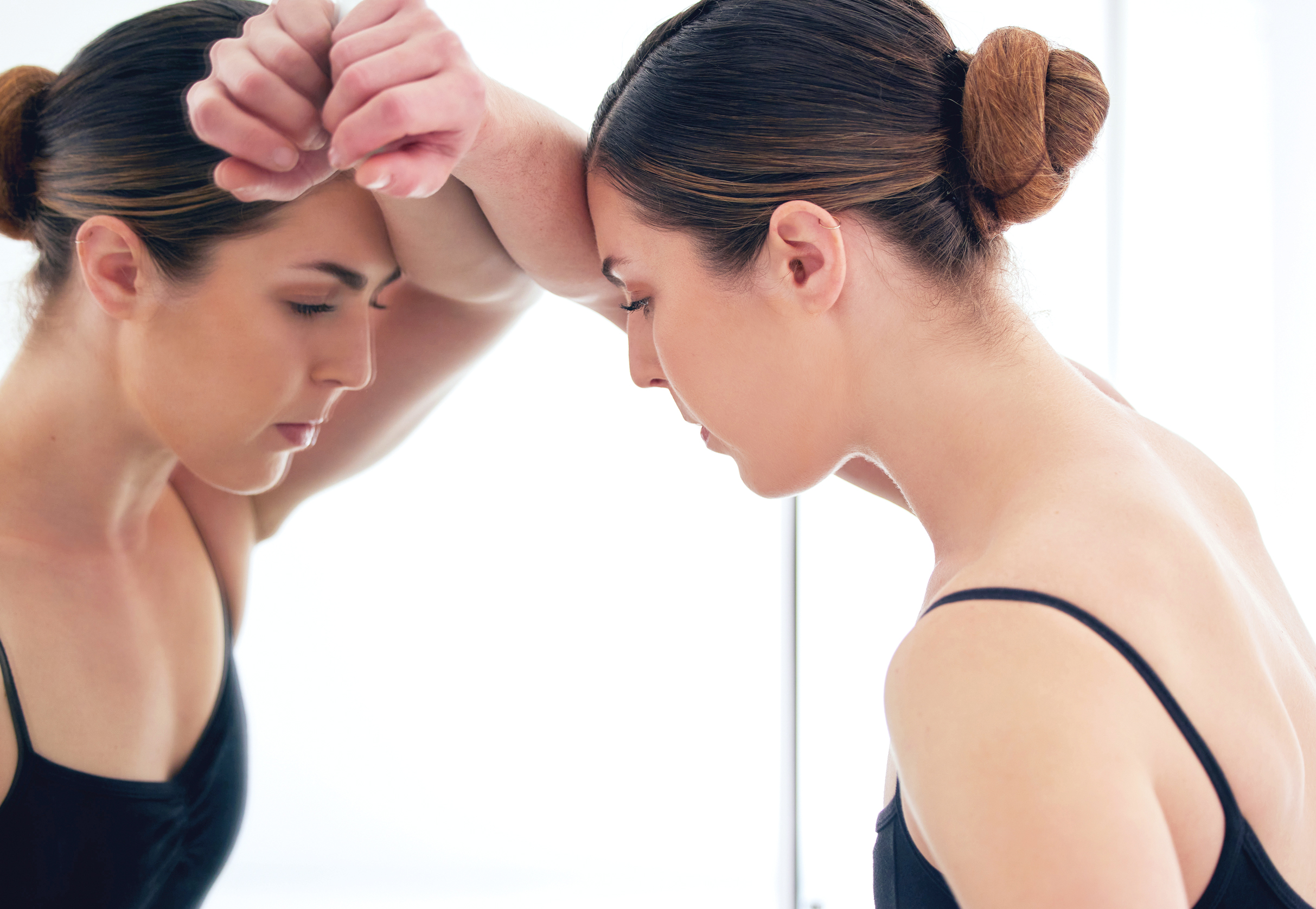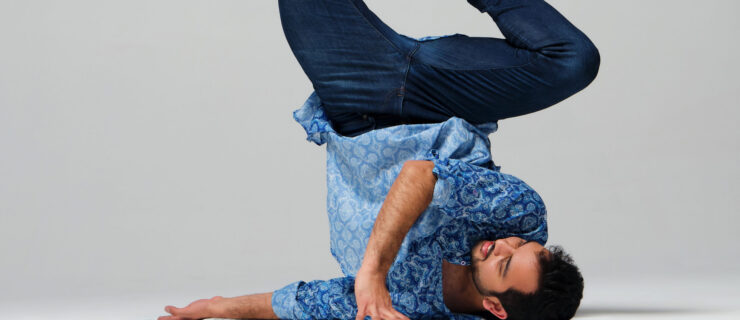Understanding Body Dysmorphic Disorder

Toronto-based freelance dancer, actress, and singer Hailey Balaz started to become concerned with her weight while she was a student at a performing arts high school, frequently comparing her body to the other dancers’ in her classes. “I was 15 the first time I went on a diet, the first time I used WeightWatchers to try and keep track of things and try and lose weight,” she remembers. “And from there, it spiraled to food-tracking throughout university, and dieting, and intermittent fasting.” It took Balaz nine years to receive a body dysmorphic disorder diagnosis. Since then, she’s become an advocate for body positivity in the performing arts as she continues to build her career in musical theater. “It’s been amazing to me how much bigger my world has gotten since I’ve started talking about this,” Balaz says. “I was always trying to make myself smaller, and now that I’ve stopped doing that, my world has expanded.”
What Is BDD?
According to Nadine Kaslow, a psychologist who works with dancers, body dysmorphic disorder (BDD) is a mental health condition characterized by an obsession with a perceived defect in physical appearance. “When we talk about body-image issues in dancers, we often talk about ‘I’m fat’ or ‘I don’t like my body’ as this sort of generalized thing—BDD has to be something very specific,” she explains.
Sometimes, as in Balaz’s case, BDD can overlap with disordered eating. Kaslow says that individuals suffering from BDD often will go to drastic measures to change their perceived flaw, and these methods can sometimes manifest in the form of disordered eating, like anorexia or bulimia, or looking towards plastic surgery to alter their appearance.
How It Affects Dancers
Because of the aesthetic nature of dance, the studio and stage can be rife with triggers for BDD. For Balaz, the requirement to wear tights and a leotard in every ballet class was difficult, especially on days when she was feeling particularly negative about her appearance. Seeing only dancers of a certain body type portrayed in media made her feel like there wasn’t a spot in the industry for dancers who looked like her.

Kaslow adds that the frequency with which comments about weight and physical appearance are doled out in some dance classes contributes to creating an unhealthy environment. “It’s ingrained in the dance culture,” she says. “One of the biggest things we can do is change how we talk with dancers.”
How BDD Is Treated
Treatment for BDD may include talk therapy or medications. Talk therapy could be cognitive behavioral therapy, interpersonal therapy, or, depending on the situation, trauma therapy, explains Kaslow. Because BDD has similarities to obsessive compulsive disorder, exposure and response prevention might also be utilized.
Kaslow recommends dancers struggling with BDD learn to draw on mindfulness techniques when the disorder is triggered—reminding themselves to stay present and see and accept their body the way it is. She also suggests focusing on connecting with others during dance class and building a support network, as well as taking steps to avoid excessive mirror-checking—a common ritual for BDD sufferers—in class or rehearsal. She adds that it’s okay to ask teachers or artistic staff to avoid commenting on certain things that you find triggering.
How Does Food Play a Role?

BDD often overlaps with disordered eating. Val Schonberg, a registered dietitian and board-certified specialist in sports dietetics who works with dancers, explains that nutrition can play a role in treatment. If BDD is causing a dancer to restrict food or engage in other behaviors associated with disordered eating, Schonberg recommends scheduling an assessment with a dietitian to determine if enough fuel is being consumed for daily dance activity. “When we see that an individual has a significant energy deficit, then it’s about helping them get adequate nourishment for muscles, bones, training, brain, and digestion,” she says.
Schonberg emphasizes that when you eat, you’re not only nourishing your body, but also providing your brain with the nutrients it needs to make essential neurotransmitters, such as serotonin, which helps regulate mood. Because BDD is a mental health condition, it’s important to remember that eating plenty of healthy, nourishing food will not only fuel your dancing, but it’s also a vital aspect of recovery.
Resources
If you’re struggling with body dysmorphic disorder or would like to learn more, psychologist Nadine Kaslow, registered dietitian Val Schonberg, and freelance dancer Hailey Balaz recommend the following resources:
- BDD Foundation: Find information and support, including online groups, an email helpline, and information on different treatment modalities at bddfoundation.org.
- International Association for Dance Medicine & Science: Information on many aspects of dance and health, plus a directory to help find a provider at iadms.org.
- International OCD Foundation’s Help for BDD website: Learn about BDD and find help in your area at bdd.iocdf.org.





